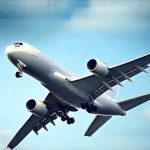Prostatitis, inflammation of the prostate gland, can present significant discomfort for those affected, even without travel. Adding long flights into the mix introduces unique challenges – prolonged sitting, limited movement, cabin pressure changes, and potential difficulty accessing restrooms – all potentially exacerbating symptoms. For individuals managing chronic prostatitis or experiencing acute flare-ups, careful planning and proactive strategies are essential to minimize discomfort and ensure a more tolerable journey. This article aims to provide practical guidance for navigating air travel with prostatitis, focusing on preparation, in-flight management, and post-flight care considerations.
Understanding the specific type of prostatitis you have – whether acute bacterial, chronic bacterial, chronic prostatitis/chronic pelvic pain syndrome (CP/CPPS), or asymptomatic inflammatory prostatitis – is important because symptom presentation can differ significantly. This will influence how you approach travel preparation and in-flight management. Consulting with a healthcare professional to discuss your travel plans and obtain personalized advice is always recommended before embarking on a long flight.
Pre-Flight Preparation: Minimizing Potential Flare-Ups
Thorough pre-flight preparation is arguably the most crucial step in managing prostatitis during air travel. This isn’t just about packing medication; it’s about anticipating potential triggers and proactively mitigating them. Planning ahead can significantly reduce anxiety and improve your overall travel experience.
Consider scheduling flights with layovers if possible. These breaks allow for stretching, walking around, and restroom access, all of which help counteract the prolonged sitting associated with long-haul flights. It also allows you to reassess how you’re feeling mid-journey and adjust your strategy accordingly.
In-Flight Management: Comfort and Symptom Mitigation
Long flights present a unique set of challenges for individuals managing prostatitis. The confined space, limited movement, and potential dehydration can all contribute to increased discomfort. Prioritizing comfort and proactive symptom management throughout the flight is key to a more bearable experience.
Hydration & Dietary Choices
Staying well-hydrated is paramount during air travel generally, but especially important for those with prostatitis. Dehydration can concentrate urine, potentially irritating the bladder and exacerbating urinary symptoms. Avoid excessive caffeine and alcohol consumption, as these act as diuretics and can worsen dehydration. Opt for water throughout the flight, and consider bringing electrolyte tablets or powder to replenish lost minerals. Light, easily digestible snacks are preferable; avoid foods that might trigger digestive upset, which could indirectly impact pelvic floor muscle tension.
Movement & Positioning
Prolonged sitting is a significant contributor to prostatitis symptoms. Regularly getting up and walking around the cabin – even just during restroom breaks – can significantly improve circulation and reduce pressure on the prostate gland. If leaving your seat frequently isn’t feasible, perform simple seated exercises such as ankle rotations, leg extensions, and gentle pelvic tilts. Consider requesting an aisle seat for easier access to the aisle when you need to move around. Experiment with different sitting positions; using a small lumbar support cushion can help maintain proper posture and reduce strain on the lower back and pelvis.
Pelvic Floor Awareness & Relaxation
Pelvic floor muscle tension often accompanies prostatitis, contributing to pain and urinary symptoms. Consciously practicing pelvic floor relaxation techniques during the flight can provide significant relief. Diaphragmatic breathing exercises – slow, deep breaths that expand the abdomen – are a simple way to promote relaxation throughout the body, including the pelvic floor muscles. Avoid consciously clenching or tightening your pelvic floor muscles; focus on gentle release and lengthening. If you’re familiar with other pelvic floor muscle relaxation techniques (such as progressive muscle relaxation), incorporate them into your in-flight routine.
It is important to remember that this information is for general guidance only, and should not be considered medical advice. Always consult with a healthcare professional before making any changes to your treatment plan or travel arrangements related to prostatitis. They can provide personalized recommendations based on your specific condition and needs. Furthermore, having a clear understanding of airline policies regarding medication, accessibility, and assistance for passengers with health concerns is also advisable. Preparing a list of relevant medical information (medications, allergies, conditions) and keeping it readily accessible during travel can be helpful in case of any unforeseen circumstances or if you require medical attention. Finally, prioritize self-care both before, during, and after your flight to ensure a more comfortable and enjoyable journey.





















